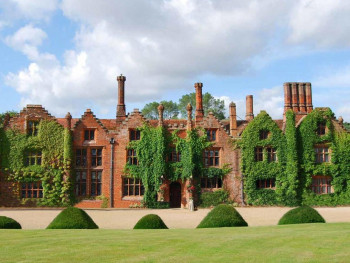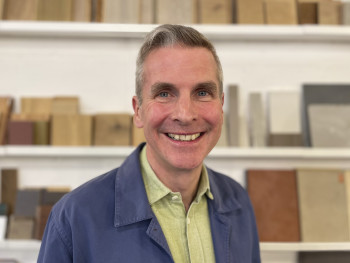We have been developing our understanding of the Passivhaus standard at Jerry Tate Architects for some time, and are excited to be about to start on site with our first UK based Passivhaus project. This article describes how we got to grips with the Passivhaus requirements, and also examines where (in our experience) the standard can and cannot be successfully applied to projects.
Passivhaus has been on our ‘radar’ as it were since 2007 when we designed our first new-build house, Hoo House in Suffolk. We organised a workshop with the client and Buro Happold to establish a strategy on how the house would be ‘sustainable’. Rob Cooke from Buro Happold was very clear that the most appropriate set of parameters we should work to for the external fabric would be the Passivhaus criteria. However we did not use the Passivhaus Planning Package design and energy tools, and did not target certification.
Our first experience of a scheme which was conceived as a Passivhaus from the start was a new-build house project we recently completed in Sarmede, Italy. In truth this was a ‘gentle’ introduction to the rigours of Passivhaus design. We were engaged as concept architects on the scheme, with the local Italian architect and the Austrian contractors taking the lead on delivery and meeting the Passivhaus standard. During the concept design we gained our first experience of using the Passivhaus Planning Package spreadsheet. This, combined with some excellent training courses organised by the AECB, convinced us how powerful the tool can be to provide a live ‘update’ of predicted energy consumption when making design decisions.
Before we started the Sarmede House we had been working on a new-build house called Falconers II for the then Environmental Editor of the Independent Newspaper, Geoffrey Lean and his wife Judy. The new scheme replaced their existing house which was tragically destroyed by a fire in February 2008. The Leans decided to re-build ‘green’ and at the time Geoff wanted to test the government’s (then) commitment for all new homes to be Code for Sustainable Homes Level 6 by 2016 (when CSH level 6 was really tough)! Using the limited insurance funds available we completed a lime and hemp house that was carbon positive in its’ construction and 10% short of being carbon neutral in operation, based on the SAP calculation method, a good result. Following the Sarmede House we decided to test the Falconers design using the Passivhaus Planning Package calculation. To our surprise with the specified building fabric and mechanical ventilation heat recovery system, the house appeared to achieve a Specific Space Heat demand rating of 14kWh/(m2a) which was less than the ‘magic’ threshold of 15kWh/(m2a) required for certification. Could the house potentially be a Passivhaus? It was at this point we discovered a key factor in Passivhaus construction, you need to plan for it at the very start of a project. Talking with Sally Johns of Passivhaus certifiers and consultants Warm we realised that the detailing, whilst being excellent practice for the UK, was not going to be robust enough in terms of airtightness. Indeed this proved to be the case at the end of the project when we did not achieve the required air-tightness for Passivhaus.
We are currently working on a new-build house in Muswell Hill which should meet Passivhaus certification and this time we have been considering both the design and the Passivhaus construction methods much earlier in the process. Warm very kindly introduced us to Will South of CoCreate who are assisting us as Passivhaus certifiers and consultants on the project (a lot more convenient as they are based next to our offices in Hackney, Warm are in Plymouth). The project is described in more detail in the below case study, but it has been a particularly interesting design process for two reasons. First, for planning purposes the house has to fit into the context of a very consistent urban architectural environment, so we are not building an ‘overt’ eco-house. This is a useful exercise for us to demonstrate that radical construction methods can still provide a good contextual solution (where necessary). Secondly, the client had a lot of sustainable aspirations which were not directly compatible with Passivhaus construction. For example they were keen to use breathable lime and hemp construction, but this would not have guaranteed the required airtightness to get Passivhaus certification and we have now proposed an alternative construction method, using natural fibre insulation. That aside we are very excited to be starting on site in two months time, although following our experience on Falconers we will hold off any celebrations about Passivhaus certification until we have completed the air-tightness tests!
We are always examining our projects at an early stage to see if they could reach Passivhaus criteria, but it is surprising how often key factors can make this impossible to achieve. For example we recently completed an outline design for a two storey new-build house in Suffolk, which according to the PHPP calculation would have met the Passivhaus criteria. Following pre-application discussions with the local Planning Authority we had to reduce the height of the proposal to a single storey, which is not an efficient building form for Passivhaus. With another project, a new-build house in Yorkshire on a fantastic but heavily wooded site, we achieved the right building form and design, but shade from the surrounding woodland would prevent sufficient solar gain. Sometimes the clients themselves make an informed decision that they do not want a Passivhaus. We are about to start construction of a new-build house in Hampshire, where the client was very keen to use the PHPP calculation for the design, Passivhaus rated components in the building fabric and best practice throughout; but was simply not interested in achieving certification. All of these projects will be very successful and sustainable on their own terms, but will not achieve the magic Passivhaus certification at the end.
I think this is an important message about the Passivhaus standard. It is a black and white process, either a project achieves certification or not, and this gives a real clarity of outcome. However the problem with this lack of flexibility is that in the UK, with limited development land and planning opportunities, it is not possible to apply the Passivhaus criteria to every project. In order to achieve Passivhaus you need to have the right site, the right local authority, and a client who is very keen to get a Passivhaus building (and operate it correctly after completion). We promote Passivhaus wherever we can and are members of the Passivhaus Trust, but in truth I do not think it is a blanket solution to all our low-energy housing needs. It is one of a range of potential solutions for a sustainable future, although given the fundamental simplicity of the Passivhaus approach, one we should seek to use wherever we can.
Case Study 1 – Sarmede House
This project is a new-build house in the area of Sarmede in Italy, to the north of Venice and not far from the Austrian border. We worked with a local Italian architect on the design of the house and designed from the start with the PHPP planning package to ensure the proposal was going to meet the Passivhaus criteria. The local climate data for the region (important in the PHPP calculation) was milder than the UK and allowed us to introduce some additional shading devices around the house. This was important, as we were concerned that the proposed super insulated timber frame may be susceptible to overheating in the summer months. The Austrian contractor was very experienced in Passivhaus construction; the timber frame for the house was all pre-fabricated with most of the window elements pre-installed and tested in the factory. This drastically reduced the risk of the project not meeting the required air-tightness, as this can often be compromised by workmanship issues on site. The house has recently been completed and has achieved Passivhaus certification, we will now wait for some data on the energy used in operation and how comfortable the clients are in the house throughout the year.
Case Study 2 – Muswell Hill House
This project is a new-build house in London, in an area of very consistent existing houses. We have worked with CoCreate as Passivhaus consultants/certifiers on the project, and in collaboration with them have adopted a strategic response to this restrictive planning context and the tight urban site. The northern front facade mimics the appearance of the surrounding houses, whereas the southern rear facade opens out to provide more glazed area, which is important for solar gain in the PHPP calculation. The proposed construction is prefabricated timber framed panels with natural fibre insulation, and we have sourced the majority of the key building components, such as windows and doors, from the Green Building Store, which is by far the best UK based supplier of Passivhaus rated products. Whilst this is a new-build house, we are working up to an existing neighbouring party wall, and an important part of the design process has been to ensure that this will not compromise the thermal performance of the building. We will be starting on site in two months time and will work closely with CoCreate and the contractor to make sure that on-site workmanship issues, especially air-tight seals, are successfully addressed so that we achieve certification at completion.



